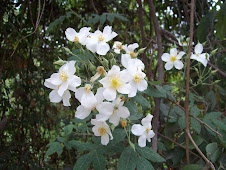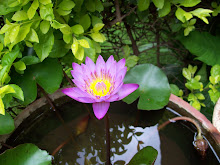
A stream runs through the northern edge of the suburb where I live. Long time ago, it was a fresh water stream which fed the vegetable gardens . Now it is a malodorous and polluted stream carrying mainly the discharge from various factories. The water treatment Plant upstream makes sure that it does not become a dead creek. The Giant Cane,
Arundo donax along its banks is another thing which keeps the creek full of fish and birds.
The Giant Cane is a native of India, which has naturalised itself in many tropical and sub tropical lands. In some places, it is considered a pest as it uses up large amounts of water.
The Giant Cane has been used to make flutes since 5000 years. Reeds of the woodwind instruments like the oboe, clarinet and saxophone are made from this plant. It is also used as a bio fuel. Animals do not eat it as it contains toxins like silica. The plant is rich in the alkaloid tryptamine.
 Caraonda Carissa carandas is a native thorny bush found all over India. The leaves are an attractive bronze colour when young. Its fruit is much loved by birds and humans. The pretty pink berries turn deep red and purple. The sour fruit is made into jelly, preserves and pickles which are great favourites .
Caraonda Carissa carandas is a native thorny bush found all over India. The leaves are an attractive bronze colour when young. Its fruit is much loved by birds and humans. The pretty pink berries turn deep red and purple. The sour fruit is made into jelly, preserves and pickles which are great favourites . The flowers of the Caraonda resemble jasmine, and are sweet scented. The plant flowers twice a year. Although Caraonda is a jungle plant, people plant it ar the edge of their property for the fruit . It makes an effective hedge as its thorns can stop humans and cattle. Its root is supposed to keep away snakes.
The flowers of the Caraonda resemble jasmine, and are sweet scented. The plant flowers twice a year. Although Caraonda is a jungle plant, people plant it ar the edge of their property for the fruit . It makes an effective hedge as its thorns can stop humans and cattle. Its root is supposed to keep away snakes.







